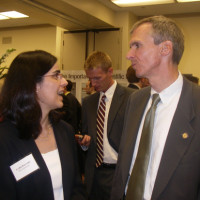An Update on Trends in Degree Production
With plans under way for CRA’s next Taulbee Survey of PhD-granting CS/CE departments in the fall, it is a good time to mention that CRA’s website offers trend data from both the Taulbee reports and from the National Science Foundation. The two sources complement each other: Taulbee data are more current and focused on CS/CE (the NSF groups information science with computer science), while NSF data provide longer trends, an opportunity to compare CS/CE with other fields, and include all degree-granting institutions.








